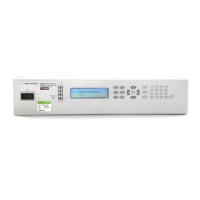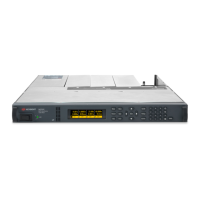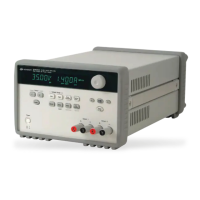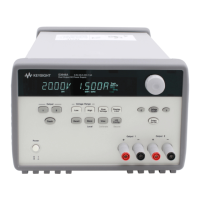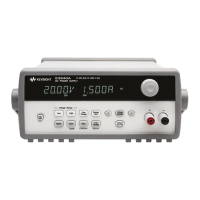Front Panel Menu Reference SCPI Command
Push the Output key on the “master” (Unit1) On the “master” (Unit1):
OUTP ON
Initiate the transient systems on all units.
Front Panel Menu Reference SCPI Command
Select Transient\Control
Select Initiate.
Initiate the transient trigger system:
INIT:TRAN
Trigger additional output changes. All units will be set to the step values. On the “master” (Unit 1)
only:
Front Panel Menu Reference SCPI Command
Select Transient\Control
Select Trigger.
To trigger the Step transient:
TRIG:TRAN
Specification Effects
The design of the APS has been optimized for parallel operation. Therefore, the effect of paralleled
units on the specifications has been kept to a minimum.
When units are paralleled, there is no degradation of any specification other than the load regulation
specification. All other specifications, including output noise, programming accuracy, readback
accuracy, and transient response are unaffected by paralleled operation. For example, the transient
response specification for a paralleled combination is the same as the transient response for an
individual unit.
Load Regulation Effect
With two or more units are paralleled with current sharing enabled, there will be a small additional
voltage regulation effect. The worst case additional voltage regulation effect is as follows:
∆V
OUT(WORST_CASE)
=0.003%(V
RATING
)
To determine the total output voltage regulation effect for a specific unit, you must add the worst-case
value from the following table to the CV load regulation specification for each paralleled unit.
These are the worst-case values for each unit based on its voltage rating.
V
RATED
∆V
OUT(WORST_CASE)
V
RATED
∆V
OUT(WORST_CASE)
9 V 0.27 mV 80 V 2.40 mV
20 V 0.60 mV 120 V 3.60 mV
40 V 1.20 mV 160 V 4.80 mV
60 V 1.80 mV
4 Using the Advanced Power System
172 Keysight N6900/N7900 Series Operating and Service Guide

